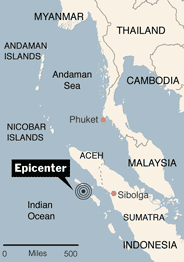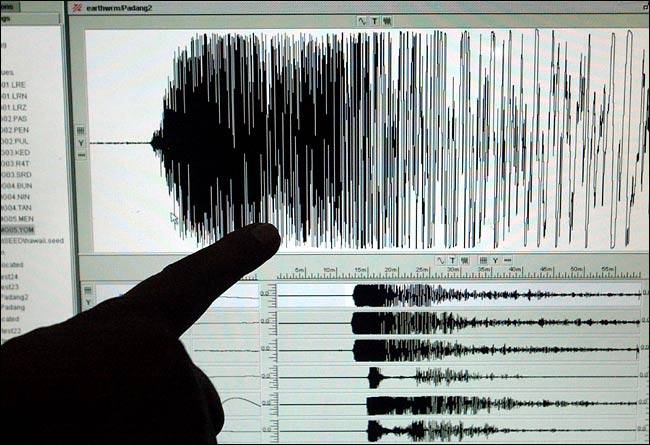Annie
Diamond Member
- Nov 22, 2003
- 50,848
- 4,827
- 1,790
Same area as before:
http://www.prh.noaa.gov/ptwc/wmsg
http://www.prh.noaa.gov/ptwc/wmsg
TSUNAMI BULLETIN NUMBER 001
PACIFIC TSUNAMI WARNING CENTER/NOAA/NWS
ISSUED AT 1629Z 28 MAR 2005
THIS BULLETIN IS FOR ALL AREAS OF THE PACIFIC BASIN EXCEPT
ALASKA - BRITISH COLUMBIA - WASHINGTON - OREGON - CALIFORNIA.
... TSUNAMI INFORMATION BULLETIN ...
THIS MESSAGE IS FOR INFORMATION ONLY. THERE IS NO TSUNAMI WARNING
OR WATCH IN EFFECT.
AN EARTHQUAKE HAS OCCURRED WITH THESE PRELIMINARY PARAMETERS
ORIGIN TIME - 1610Z 28 MAR 2005
COORDINATES - 2.3 NORTH 97.1 EAST
LOCATION - NORTHERN SUMATERA INDONESIA
MAGNITUDE - 8.5
EVALUATION
THIS EARTHQUAKE IS LOCATED OUTSIDE THE PACIFIC. NO TSUNAMI THREAT
EXISTS TO COASTLINES IN THE PACIFIC.
WARNING... THIS EARTHQUAKE HAS THE POTENTIAL TO GENERATE A WIDELY
DESTRUCTIVE TSUNAMI IN THE OCEAN OR SEAS NEAR THE EARTHQUAKE.
AUTHORITIES IN THOSE REGIONS SHOULD BE AWARE OF THIS POSSIBILITY
AND TAKE IMMEDIATE ACTION. THIS ACTION SHOULD INCLUDE EVACUATION
OF COASTS WITHIN A THOUSAND KILOMETERS OF THE EPICENTER AND CLOSE
MONITORING TO DETERMINE THE NEED FOR EVACUATION FURTHER AWAY.
THIS CENTER DOES NOT HAVE SEA LEVEL GAUGES OUTSIDE THE PACIFIC
SO WILL NOT BE ABLE TO DETECT OR MEASURE A TSUNAMI IF ONE WAS
GENERATED. AUTHORITIES CAN ASSUME THE DANGER HAS PASSED IF NO
TSUNAMI WAVES ARE OBSERVED IN THE REGION NEAR THE EPICENTER
WITHIN THREE HOURS OF THE EARTHQUAKE.
THIS WILL BE THE ONLY BULLETIN ISSUED FOR THIS EVENT UNLESS
ADDITIONAL INFORMATION BECOMES AVAILABLE.
THE WEST COAST/ALASKA TSUNAMI WARNING CENTER WILL ISSUE BULLETINS
FOR ALASKA - BRITISH COLUMBIA - WASHINGTON - OREGON - CALIFORNIA.


